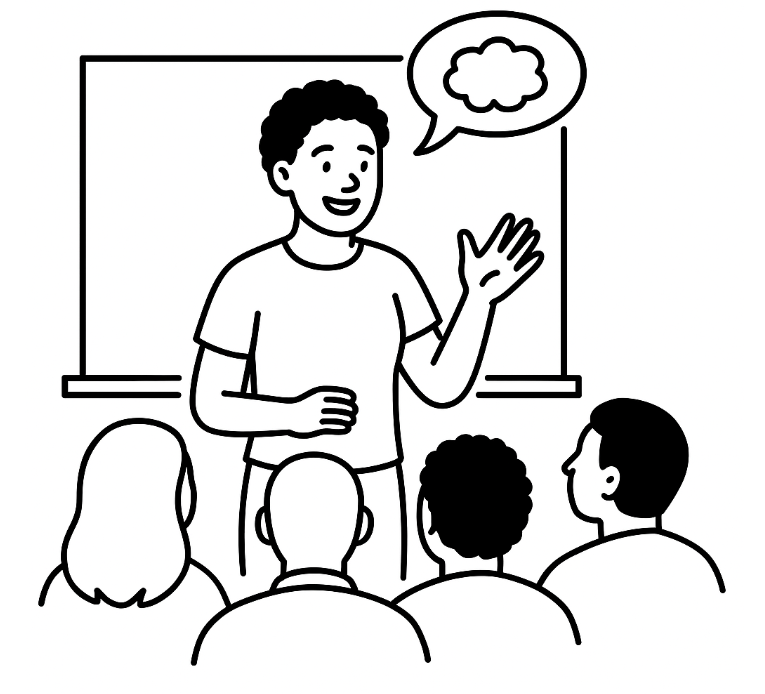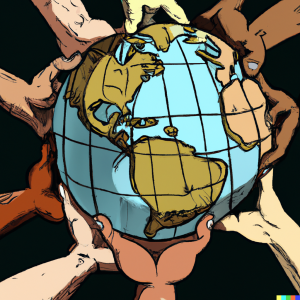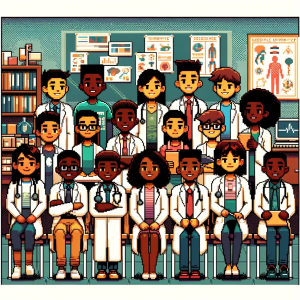
How Narrative Power Can Boost Health Equity
More than 260 governments have formally declared racism a public health crisis. That is not just a headline. It is a signal that stories shape policy, budgets, and who receives care. If that sounds wild, welcome to narrative power 101.
Why Stories Act Like Gravity
Narrative power is the ability to make certain stories feel like common sense. Think of it as the invisible current that pulls public opinion, guides media coverage, and sets the boundaries of “what’s possible.” When the dominant story is rugged individualism, we blame people for getting sick and ignore housing, wages, and pollution. When the dominant story is health as a shared responsibility, we protect kids from secondhand smoke, fund prevention, and pass laws that save lives.
Public health has been here before. Decades ago, the tobacco industry sold a tale of freedom and cool. The science was strong, but the story was louder. So communities built something bigger than messages. They built narrative infrastructure.
What is narrative infrastructure? Picture a well-run music festival. You need the stage and sound system, sure. But you also need the booking team, the volunteers, the food trucks, the shuttle buses, the after-show coverage, and a playlist that keeps people talking. Narrative infrastructure is the behind-the-scenes system that gets a new story everywhere at once and keeps it there over time.
From Cool to Costly: Tobacco’s Big Narrative Flip
In tobacco control, that looked like a full stack. Researchers published harms and exposed industry spin. Local organizers passed clean indoor air laws. Funders backed coalitions and youth campaigns. Journalists got training and started covering secondhand smoke as a community safety issue, not a lifestyle choice. Schools taught new curricula. Artists and teens made culture shift with counter-ads and die-ins. Hollywood came under pressure to stop glamorizing smoke. Over years, the center of gravity moved from “it’s my choice” to “it’s a hazard we can prevent.” Policy followed. Norms changed. That is narrative power at work.
Now bring that lens to racism and health. The evidence is clear. Structural racism harms health and drives inequities. But knowledge alone does not flip the default story. We still see narratives that tie insurance to employment, success to deservingness, and health to personal grit. Those stories narrow what leaders think is doable and what the public expects. If the story says health is earned, not guaranteed, proposals that unlink care from jobs sound “radical,” even if they are effective and fair.
Here is where the plot thickens. After the murder of George Floyd, many institutions spoke up. Some invested in equity work. Coverage spiked. Then the spotlight dimmed. Why? Because a moment is not an infrastructure. Without durable networks, training, funding, and policy anchors, a counternarrative struggles to hold. Meanwhile, highly resourced opposition built its own infrastructure across media, schools, and culture to push back on DEI and even the language of equity. They know stories set the field of play.
A Starter Kit for Narrative Power
So what does it take to build narrative power for health equity? Start with a simple checklist that echoes the tobacco playbook yet fits today:
- Research that centers lived experience. Do not only count cases. Document how rules, zoning, and funding choices shape risk. Put residents on the research team, not just in focus groups.
- Policy hooks that make the story stick. When a city adopts standards that recognize racism as a health driver and redesigns procurement or permitting with equity in mind, the policy itself teaches a new story.
- Resources that flow to organizers and coalitions. Lasting shifts need long-term support, not one-off grants pegged to news cycles. Fund base building, leadership, and creative media.
- Networks that share language and lift local wins. Think of this like Wi-Fi for change. People need to connect across city halls, health departments, clinics, schools, faith groups, and arts spaces.
- Training that turns experts into clear storytellers. Help clinicians, CHWs, and residents explain complex systems in plain talk and frame solutions without blame.
- Reflection and feedback loops. Celebrate policy gains, learn from misses, and keep asking whether tactics are shifting worldviews or only winning short-term skirmishes.
- Culture change, not just comms. TV writers’ rooms, museum exhibits, youth music, and games all teach values. Partner there. When art echoes policy and policy echoes research, the story gets louder.
Let’s ground this in a quick vignette. Meet Cam, a county health educator prepping a council briefing. In the old frame, Cam leads with a slide full of charts on asthma rates by neighborhood. Eyes glaze over. A councilmember asks whether residents just need to “try harder.” In the new frame, Cam opens with a mom’s daily routine carrying an inhaler, then shows a map of truck routes and zoning rules that push diesel past three schools. Next comes data on ER visits and the associated costs to taxpayers, followed by a policy package aimed at rerouting traffic, upgrading housing, and funding monitoring jobs for local teens. The science is the same. The story is different. The action space expands.
Here is the twist you may not expect. Narrative power is not about finding the perfect message and repeating it louder. A single message is a spark. Power comes when many actors build a system that keeps sparks lighting new torches. Over time, the new story becomes the water we swim in. That is how tobacco went from glam to gross in public spaces. That is how equity can move from “controversial” to “common sense.”
From Story to Budget to Health
If you work in public health, this is good news. You do not have to do everything. Pick your piece. Are you the researcher who can co-design a study with residents and publish open data? The organizer who can stitch a coalition across housing, jobs, and health? The storyteller who can translate policy into human stakes and hopeful solutions? The funder who can move dollars where they build durable capacity? The city attorney who can spot the legal levers?
The field wins when these pieces link up. That is narrative infrastructure. That is how stories shift budgets, and budgets change lives.
Let’s Explore Together
How do you see this research affecting your life or work?
What would you build first in a local narrative infrastructure for equity?



